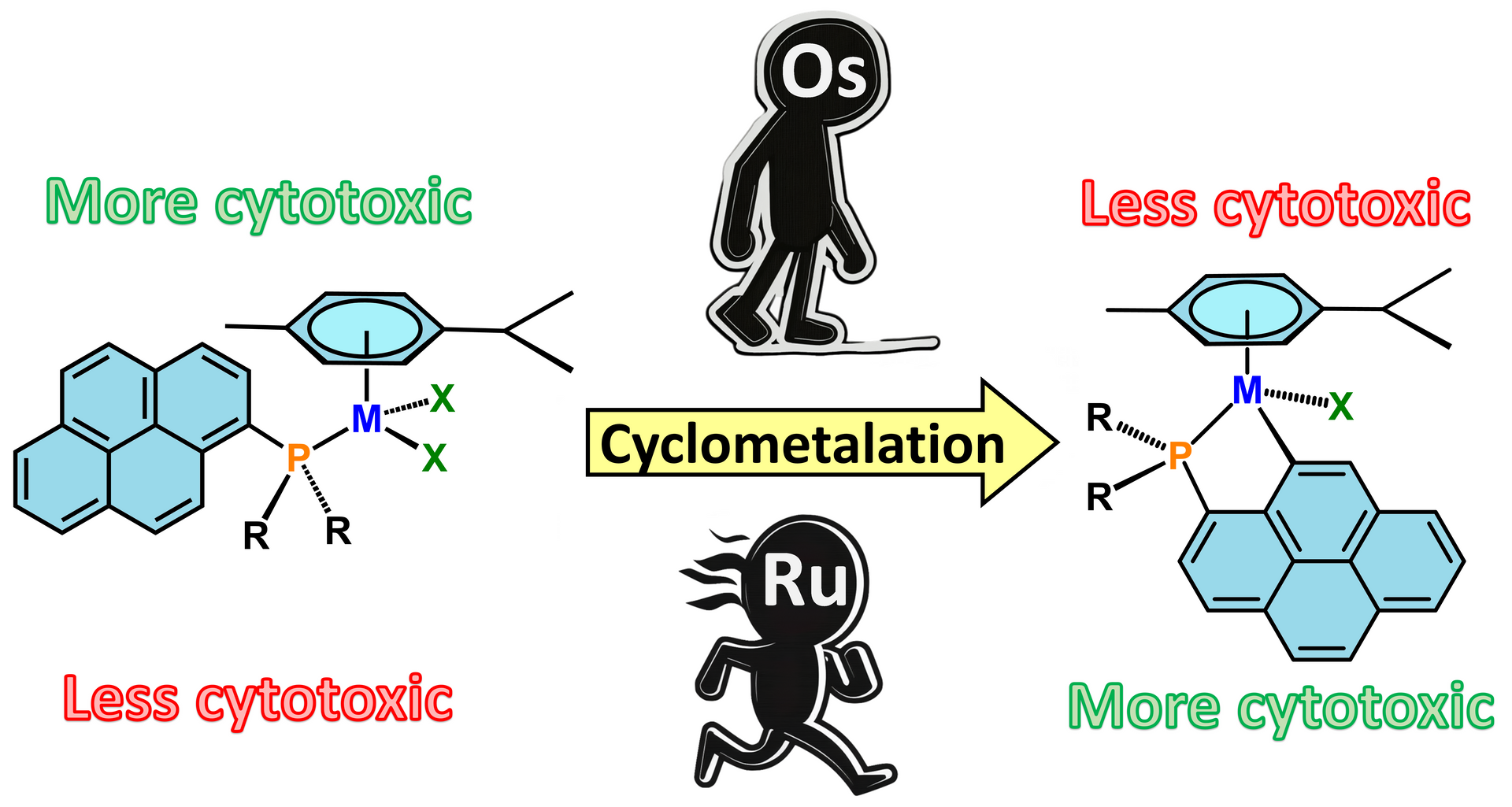Steric hindrance, ligand ejection and associated photocytotoxic properties of ruthenium(II) polypyridyl complexes
Piedad Herrera-Ramírez, Sarah Alina Berger, Dana Josa, David Aguilà, Ana B. Caballero, Pere Fontova, Vanessa Soto-Cerrato, Manuel Martínez and Patrick Gamez
J. Biol. Inorg. Chem. 2023, 28, 403-420.
Two ruthenium(II) polypyridyl complexes were prepared with the {Ru(phen)2}2+ moiety and a third sterically non-hindering bidentate ligand, namely 2,2′-dipyridylamine (dpa) and N-benzyl-2,2′-dipyridylamine (Bndpa). Hence, complexes [Ru(phen)2(dpa)](PF6)2 (1) and [Ru(phen)2(Bndpa)](PF6)2 (2) were characterized and their photochemical behaviour in solution (acetonitrile and water) was subsequently investigated. Compounds 1 and 2, which do not exhibit notably distorted octahedral coordination environments, contrarily to the homoleptic “parent” compound [Ru(phen)3](PF6)2, experience two-step photoejection of the dpa and Bndpa ligand upon irradiation (1050–430 nm) for several hours. DNA-binding studies revealed that compounds 1 and 2 affect the biomolecule differently upon irradiation; while 2 solely modifies its electrophoretic mobility, complex 1 is also capable of cleaving it. In vitro cytotoxicity studies with two cancer-cell lines, namely A549 (lung adenocarcinoma) and A375 (melanoma), showed that both 1 and 2 are not toxic in the dark, while only 1 is significantly cytotoxic if irradiated, 2 remaining non-toxic under these conditions.



